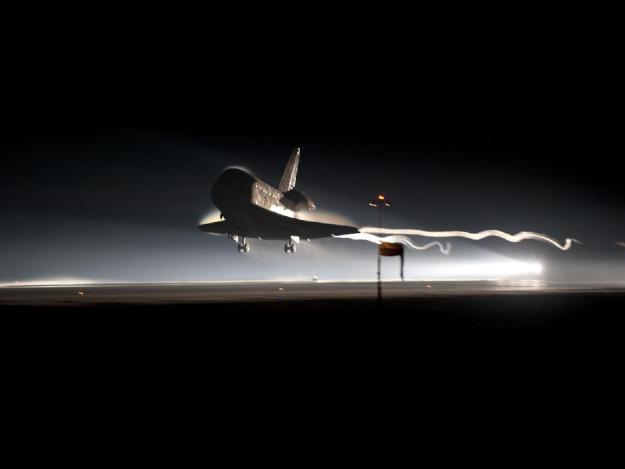
With a smooth pre-dawn landing on runway 15 at the Kennedy Space Center this morning, space shuttle Atlantis has returned to Earth for the last time, bringing a 30 year program of technological marvels to a close.
“Atlantis is home,” Mission Control said right before the shuttle touched down. “Its journey complete. A moment to be savored.”
Since the April 1981 launch of STS-1, there have been 355 different individuals from 16 countries on-board one of the five space shuttles during their flights. Those shuttles flew over 542 million miles in total, carrying out over 2,000 experiments. But surely there is no more lasting legacy of the program than the completion of the million-pound International Space Station, which took 37 shuttle missions in a span of 12 years to complete.
“After serving the world for over 30 years, the space shuttle’s earned its place in history. And it’s come to a final stop,” radioed commander Christopher Ferguson.
The shuttle ““has changed the way we view the world and it’s changed the way we view our universe,” he later said.
Despite the perfect landing and the inevitable flowing of space champagne (assuming such a thing exists), the occasion was bittersweet. With NASA’s flagship program now closed, the next chapter of American manned spaceflight is still a ways off. While President Obama has charged NASA with finding a way to send astronauts into deep space, which could mean Mars or even an asteroid, it may be a generation before that type of program is ready. In the meantime, United Space Alliance, a major employer in the space program, is set to lay off 2,000 employees.
“Children who dream of being astronauts today may not fly on the space shuttle . . . but, one day, they may walk on Mars,” NASA administrator Charles Bolden said after the landing. “The future belongs to us. And just like those who came before us, we have an obligation to set an ambitious course and take an inspired nation along for the journey.”
The final shuttle mission lasted 12 days and 18 hours. Today’s morning landing was the 25th shuttle landing at night and the 133rd in the program’s history.
The Atlantis crew consisted of Ferguson, pilot Doug Hurley, and mission specialists Sandra Magnus and Rex Walheim, who over the course of the mission offloaded over 9,400 pounds of spare parts and supplies to the ISS. The team utilized the Rafaello multi-purpose module, a 21 foot long, 15 foot diameter space cargo container, which they refilled with nearly three tons of unneeded equipment from the ISS to bring back to Earth.


